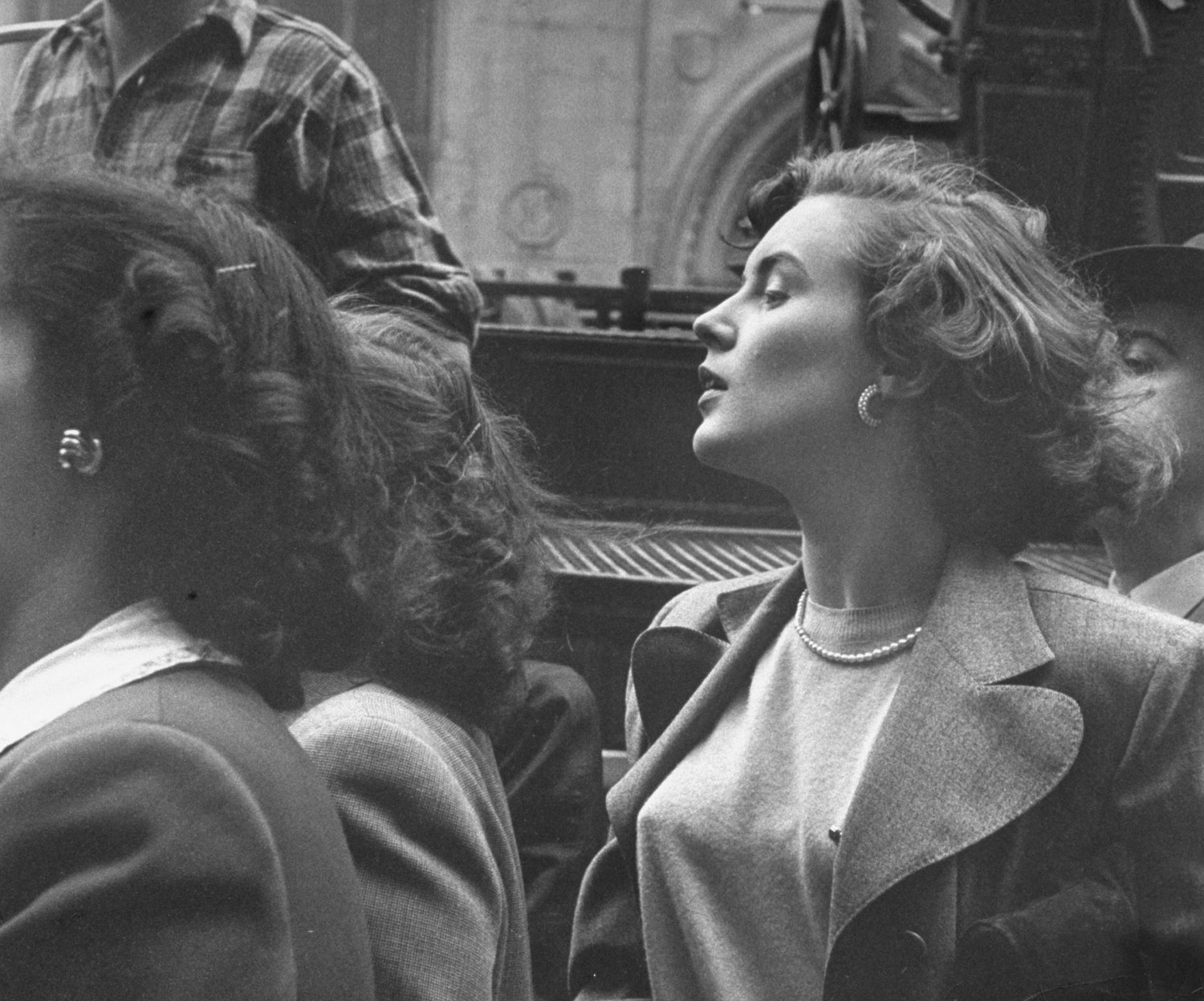
Of all the photo essays that LIFE magazine published over the decades, a 12-page 1948 feature known simply as “Career Girl” remains among the most moving and, in many ways, one of the most surprising. Chronicling the life and struggles in New York City of a 23-year-old Missourian named Gwyned Filling, the article — and especially the essay’s photographs by Leonard McCombe — struck a nerve with LIFE’s readers. Seven decades later, McCombe’s pictures have lost none of their startling intimacy, or their empathy.
A 1947 graduate of the University of Missouri School of Journalism, Gwyned Filling moved to New York with a friend a week after commencement. Less than a year later, LIFE selected her, from more than a thousand other candidates, to serve as an emblem of the modern “career girl” — the smart, driven young woman who viewed post-World War II America, and especially its big cities, as a place where opportunities seemed limitless. After all, the nation’s workforce during the critical war years had been transformed by a massive influx of skilled female workers; when the war ended, it was only natural that educated, ambitious women would view the labor landscape as utterly changed—for the better.

The article that appeared in the May 3, 1948, issue of LIFE — titled “The Private Life of Gwyned Filling” (see slide #3) — follows Gwyned as she negotiates the frenetic universe of New York City while trying to keep her own personal hopes and career expectations in perspective. She works; she dines out; she stays abreast of the doings of friends and family back home; she dates; she dreams.
The reaction of LIFE’s readers, meanwhile, ranged (perhaps predictably) from outrage and moral indignation at Gwyned’s “unladylike” pursuits to a kind of celebratory relief that LIFE chose to show on its cover “a young woman with a serious, purposeful, intelligent face” rather than “some vacuous-faced female with the molar grin that has come to be regarded in America as a smile.”
A reader from Detroit, on the other hand, opined that if the story “can keep only a few girls in their small-town homes it will have done at least some small service to humanity. Big cities are a menace to the progress of civilization. The people who fling themselves against them to be battered to pieces like moths against a lamp are fools.”
In the end, the enduring value of “The Private Life of Gwyned Filling,” and of McCombe’s quiet, masterful portrait of Gwyned at her happiest, her most determined and her most despairing, is that it serves as an honest record of a certain moment (the late 1940s) in a certain place (New York City) as experienced, to one degree or another, by countless women striving for something beyond what might have been expected of them a mere generation before.
Finally, it’s worth noting that in November 1948 Gwyned married the man, Charles B. Straus, Jr., she is seen dating (and, at times, weeping over) in some of these pictures. They remained married for 54 years — they had two kids and several grandkids — until Straus died in 2002. Gwyned died in 2005, in Rhode Island. She was 80 years old.



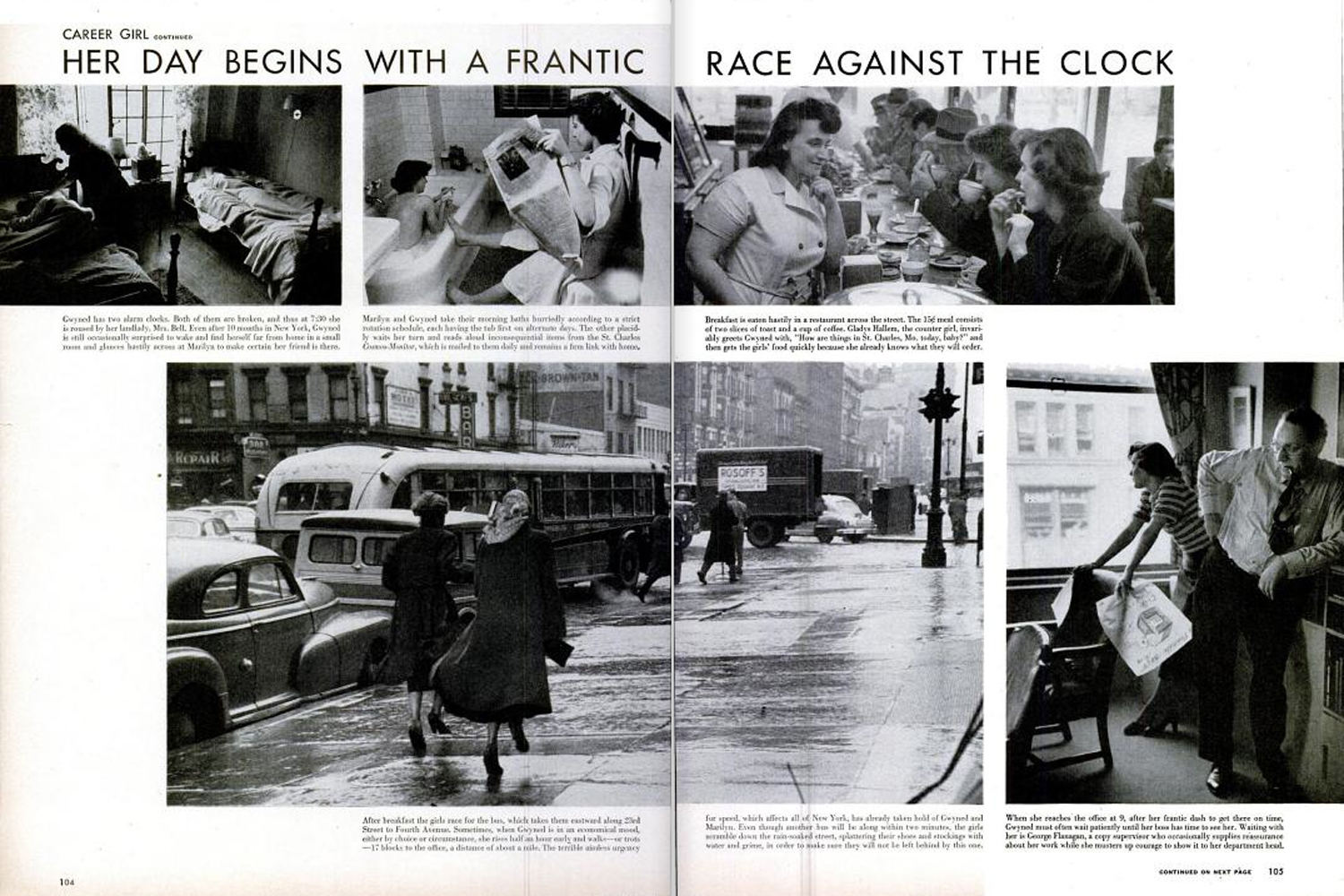
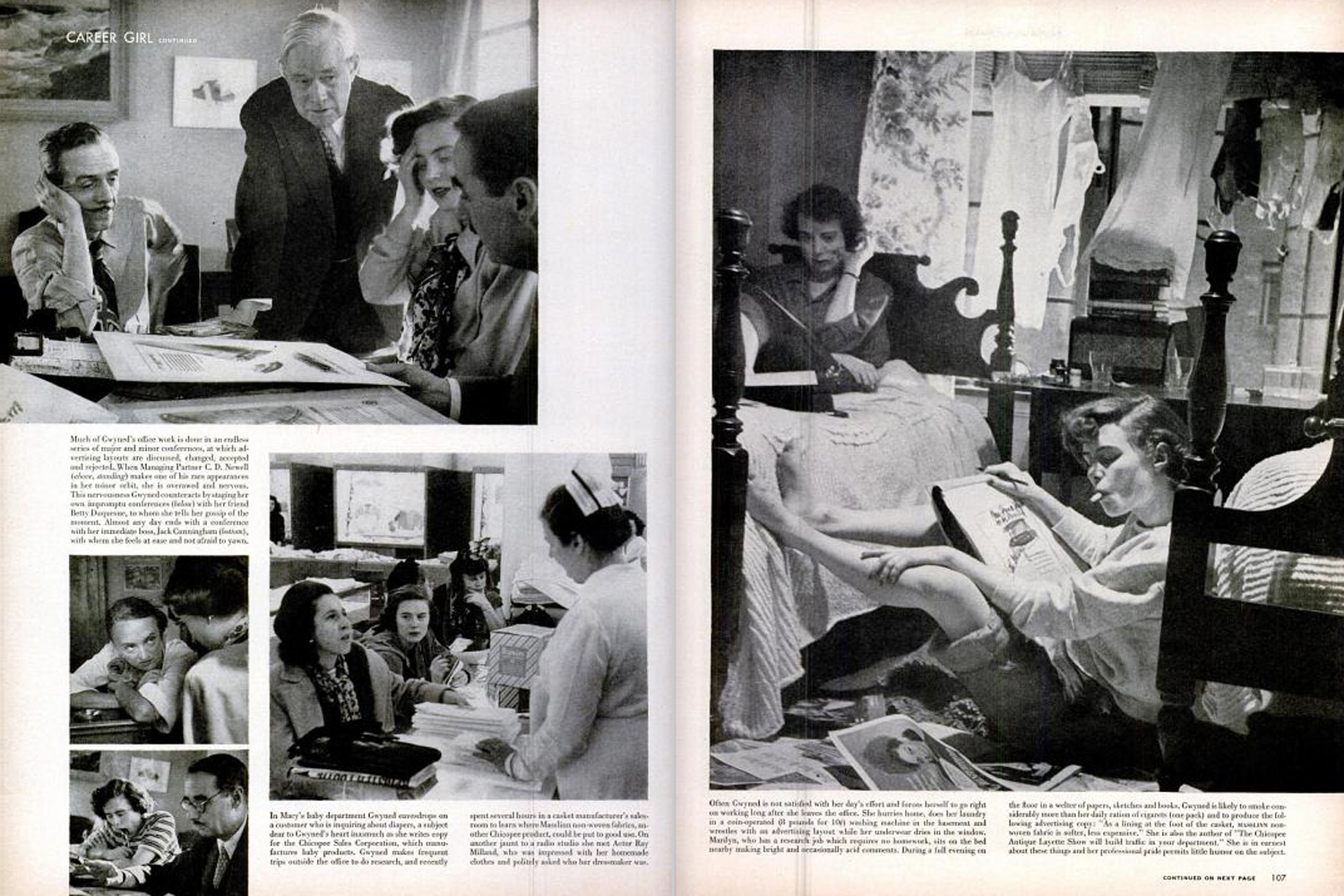
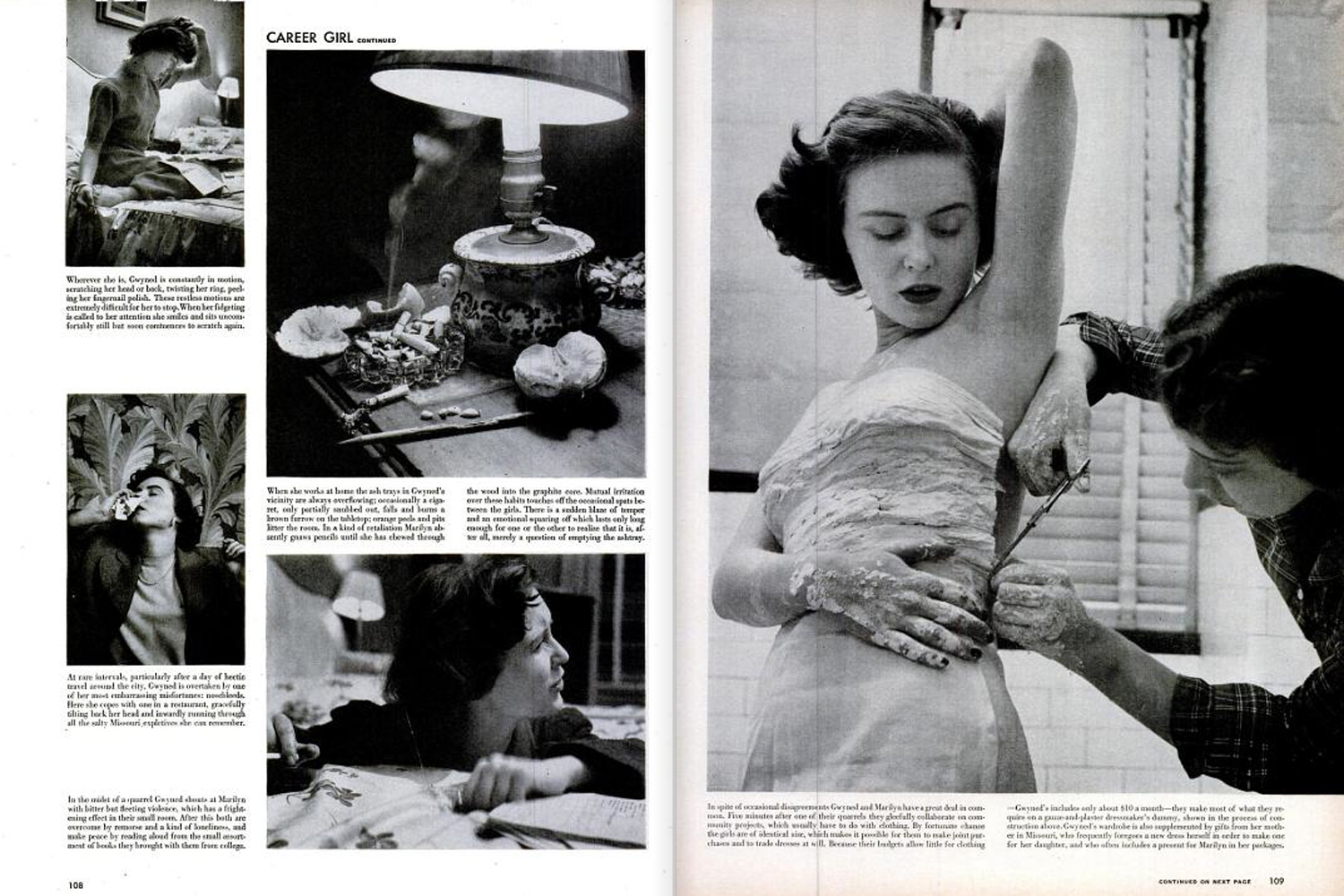

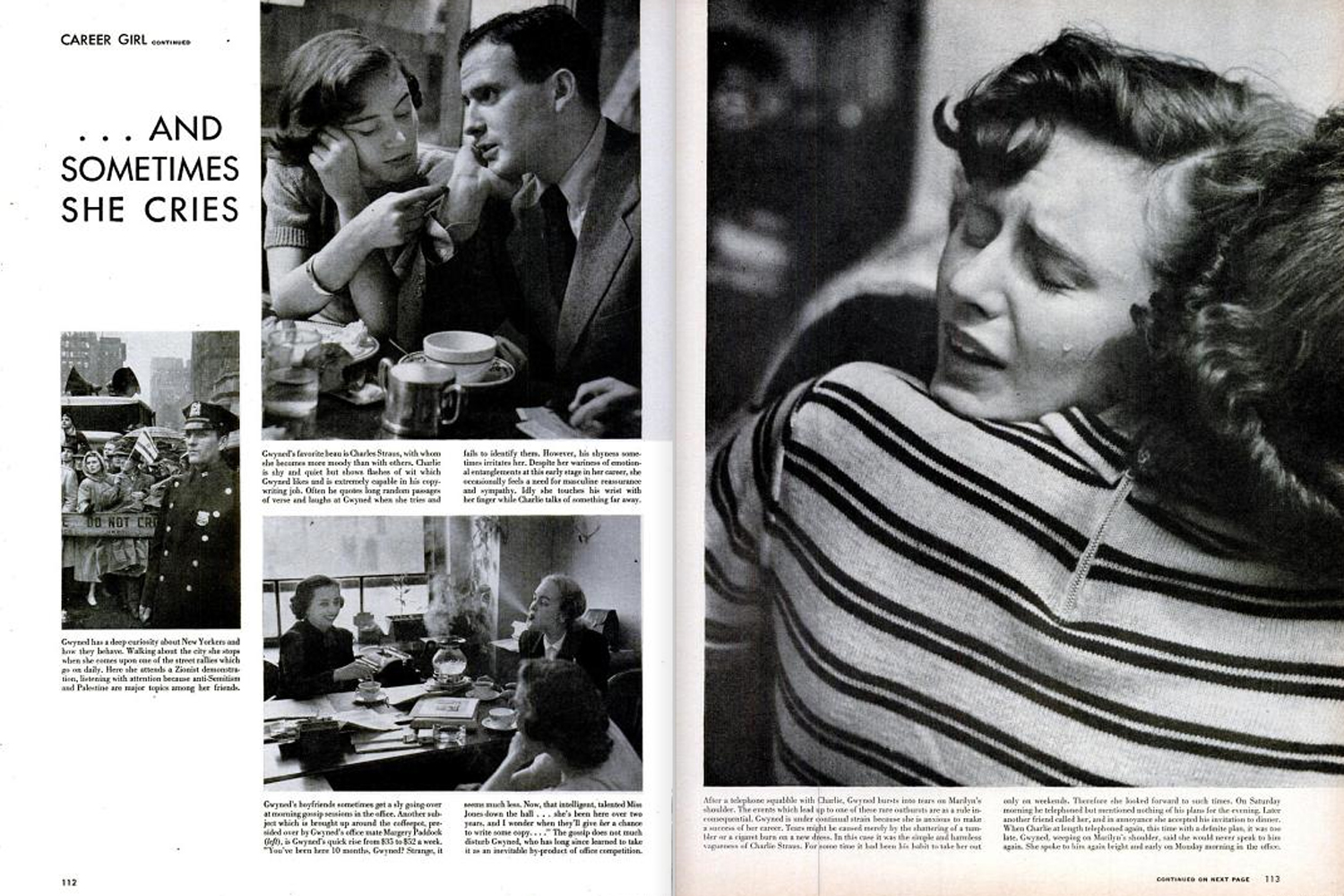
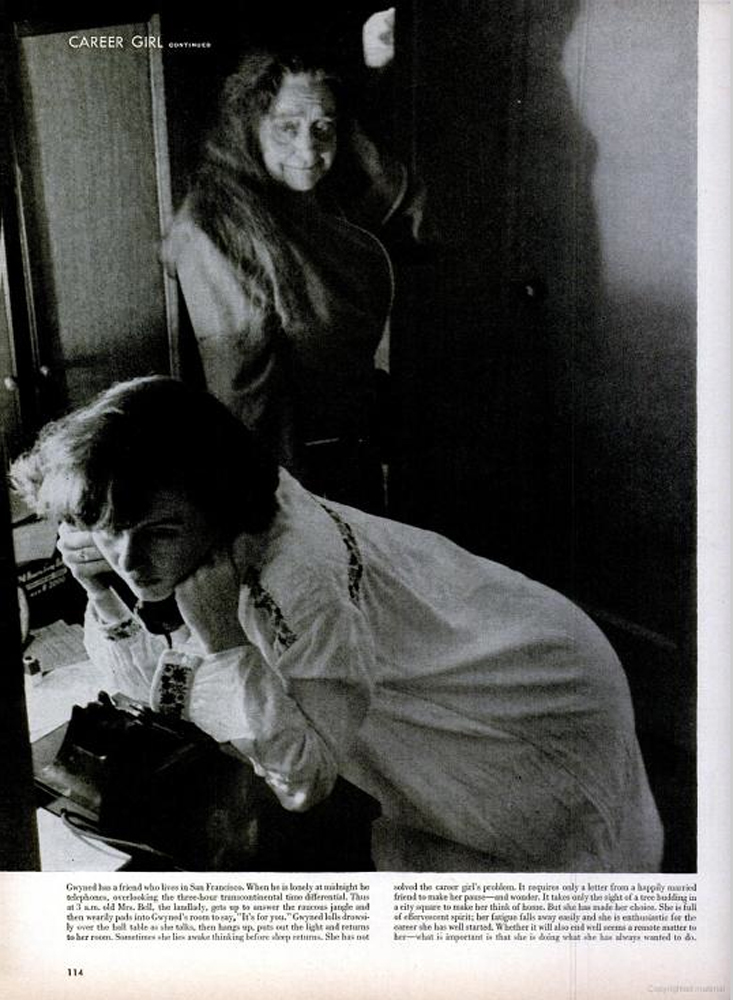
More Must-Reads from TIME
- Donald Trump Is TIME's 2024 Person of the Year
- Why We Chose Trump as Person of the Year
- Is Intermittent Fasting Good or Bad for You?
- The 100 Must-Read Books of 2024
- The 20 Best Christmas TV Episodes
- Column: If Optimism Feels Ridiculous Now, Try Hope
- The Future of Climate Action Is Trade Policy
- Merle Bombardieri Is Helping People Make the Baby Decision
Contact us at letters@time.com